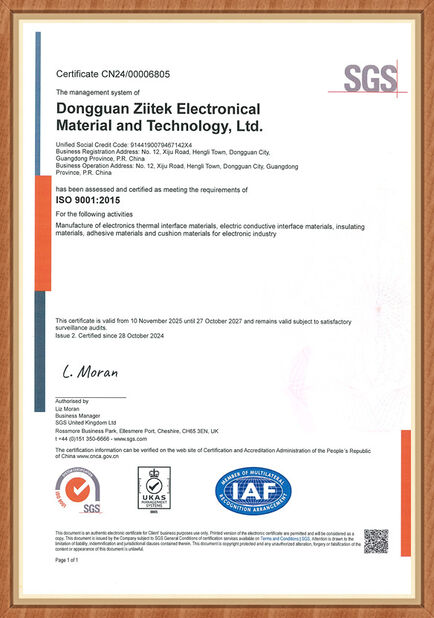Addressing Heat Dissipation Challenges: Superior Thermal Management Solutions with Graphite Sheets in Compact Spaces
In the current era of rapid development towards miniaturization and high integration of electronic devices, the contradiction between "space compression" and "performance soaring" has become increasingly acute, and heat dissipation has become the core bottleneck restricting product iteration. Whether it is a smartphone with a thickness of only a few millimeters, a notebook computer that pursues thinness and lightness, a 5G base station with high-density deployment, or a medical device in operation, the large amount of heat generated by the concentration of components in a compact space, if not dissipated in time, will not only lead to performance degradation and system crashes, but also cause hardware burnout, shortened service life, and even safety hazards. Traditional heat dissipation solutions such as metal heat sinks and thermal silicone pads either have a large volume and are difficult to adapt to narrow spaces, or have limited thermal conductivity and cannot meet the needs of high-power devices. The industry urgently needs a thermal management solution that combines the dual advantages of "ultra-thin form" and "effective heat conduction" - thermal graphite sheets have emerged as the breakthrough answer to the heat dissipation problem in compact spaces, with their outstanding performance.
Thermal conductive graphite sheets, also known as graphite heat dissipation sheets, are a new type of thermal conductive material made from high-molecular materials through high-temperature carbonization and graphitization treatment. Their core advantage lies in their unique microcrystalline structure: carbon atoms inside are arranged in an ordered hexagonal layer, forming a strong directional heat conduction path. This not only enables a thermal conductivity of up to 1700W/(m・K) (2-4 times that of copper and 3-7 times that of aluminum), but also achieves the precise heat conduction characteristic of "effective heat conduction + low thermal resistance". Additionally, they have a very thin physical form, with a thickness ranging from 0.01 to 0.04mm, and are light in weight and highly flexible, allowing them to closely adhere to complex structures such as curved surfaces and gaps. They can be easily embedded in tight spaces like between the mainboard and the middle frame of a mobile phone, between the CPU and the back panel of a laptop screen, and in the gaps between components of smart wearable devices, establishing an effective "thermal conduction network" without occupying additional volume.

In practical application scenarios, the "superiority" of thermal conductive graphite sheets is reflected in their adaptability to complex heat dissipation requirements. Take smartphones as an example. With the addition of 5G, multiple cameras, and high refresh rate screens, the heat density in the mainboard area has significantly increased, and traditional heat dissipation solutions are difficult to cover the key hotspots. By adhering thermal conductive graphite sheets to the surfaces of core components such as the CPU, GPU, and charging chips, their high thermal conductivity can quickly diffuse the locally concentrated heat to the larger area of the metal frame or back cover, and then dissipate the heat through air convection, effectively reducing the core temperature by 5-10℃ and preventing the phone from experiencing frequency reduction and lag due to overheating. In the field of wearable devices, such as smartwatches and wireless earphones, the internal space is only a few cubic centimeters, and comfort during wearing must also be considered. The ultra-thin and flexible characteristics of thermal conductive graphite sheets allow them to be bent and adhered to the surfaces of batteries and processors, effectively dissipating heat without increasing the thickness of the device, ensuring its stable operation for a long time.
Moreover, thermal conductive graphite sheets have excellent environmental adaptability and reliability, maintaining stable performance within the temperature range of -45℃ to 200℃, and are resistant to aging and corrosion, meeting the long-term usage requirements of electronic devices. At the same time, their processing technology is mature, and they can be customized for cutting according to the spatial structure and heat dissipation requirements of different devices. Whether it is an irregularly shaped structure or a high-precision micro-hole design, they can be accurately matched, further enhancing the adaptability and effectiveness of the thermal management solution.

Today, with the increasing demand for heat dissipation in compact spaces, thermal graphite sheets have become the preferred thermal management solution in fields such as consumer electronics, new energy, and medical equipment, thanks to their core advantages of "ultra-thin form, effective heat conduction, flexible adaptation, and strong customization". Not only do they solve the application limitations of traditional heat dissipation solutions in compact spaces, but they also provide key support for the miniaturization and high-power development of electronic devices with their outstanding performance, helping the industry break through heat dissipation bottlenecks and move towards higher-quality product innovation.

 Your message must be between 20-3,000 characters!
Your message must be between 20-3,000 characters! Please check your E-mail!
Please check your E-mail!  Your message must be between 20-3,000 characters!
Your message must be between 20-3,000 characters! Please check your E-mail!
Please check your E-mail! 

